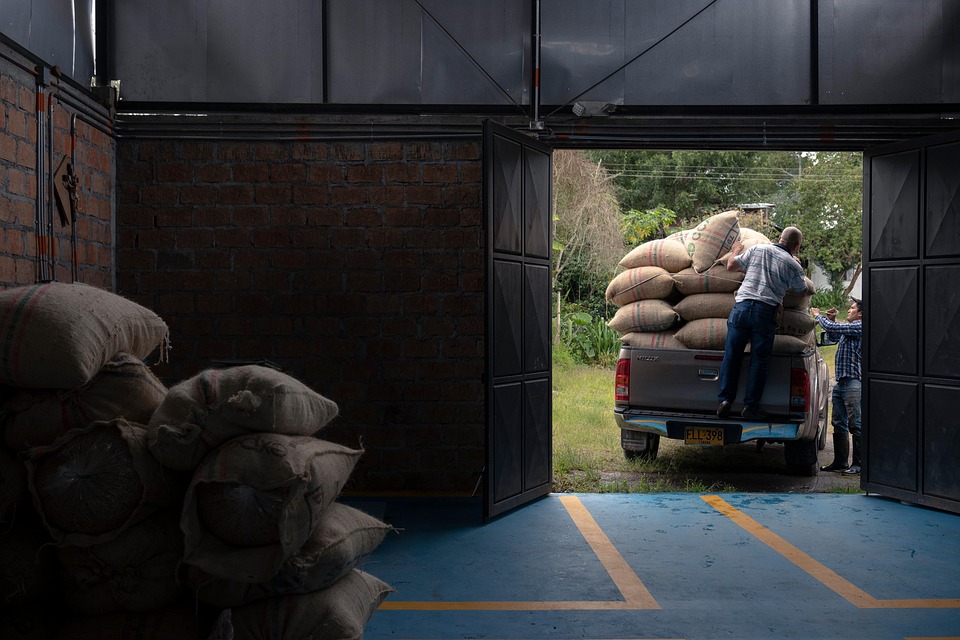## Tech Meets Terrain: How Technology is Advancing Sustainable Farming
Picture this: It’s early dawn, the sun peeking over the horizon, painting the sky in hues of orange and pink, and you’ve just stepped out to greet your crops. The air is crisp, filled with the earthy aroma of rich soil and the soft sounds of nature awakening. As the plants sway gently in the breeze, a small drone whirs above, capturing real-time images of your fields, analyzing soil health, and even surveying your irrigation system. This fusion of technology and sustainable farming practices may sound like a scene from a futuristic novel, but it’s becoming an integral part of modern agriculture.
In recent years, the agricultural landscape has undergone a significant transformation, embracing technology to not only enhance productivity but also to preserve the delicate balance of our ecosystems. Gone are the days when farmers relied solely on traditional techniques; today, tech is actively redefining how we cultivate land and nurture crops. This article dives into the innovative advancements merging technology with sustainable farming practices, proving that the future of agriculture is both green and high-tech.
### The Rise of Precision Agriculture
Precision agriculture is at the forefront of this transformation, utilizing cutting-edge technologies to optimize crop production while minimizing environmental impact. Using GPS, sensors, and data analytics, farmers can make informed decisions to enhance their yields.
#### Key Components of Precision Agriculture:
1. **GPS Technology**: Drones equipped with GPS can survey large expanses of farmland, providing detailed maps of crop growth, pest infestations, and soil conditions. This technology allows farmers to pinpoint areas that need specific interventions, reducing waste and increasing efficiency.
2. **Soil Sensors**: These devices monitor moisture, pH, and nutrient levels in real-time, giving farmers the information they need to make timely adjustments to their irrigation and fertilization strategies. This not only saves resources but also encourages healthier soil ecosystems.
3. **Data-Driven Decisions**: The integration of AI and machine learning makes it possible to analyze vast amounts of data from various sensors and drones. Farmers can predict crop yields, identify potential issues before they become crises, and tailor their approaches for maximum sustainability.
### Sustainable Irrigation Systems
Water scarcity is a pressing concern in many regions of the world, making it crucial for farmers to adopt sustainable irrigation practices. Technology plays a pivotal role here, with innovations ranging from smart irrigation systems to advanced rainwater harvesting techniques.
1. **Smart Irrigation Controllers**: These systems use weather forecasts and soil moisture data to adjust watering schedules automatically. By ensuring crops receive the optimal amount of water when they need it, farmers can significantly reduce water waste.
2. **Drip Irrigation**: This tried-and-true method has received a tech upgrade, with sensors that deliver water directly to the roots of plants. This method minimizes evaporation and runoff, promoting efficient water use.
3. **Rainwater Harvesting**: Innovative technologies now make it easier for farmers to capture and store rainwater in barrels or underground reservoirs. This practice not only conserves water resources but also helps manage stormwater runoff.
### Vertical Farming and Hydroponics
Urbanization is shifting agricultural practices from traditional farming setups to innovative vertical and hydroponic systems. This approach allows farmers to utilize limited space effectively while minimizing resource use.
1. **Vertical Farms**: These indoor farming installations bring crops closer to urban centers, reducing transportation emissions. They use controlled environments to optimize growth conditions, leading to higher yields without the need for pesticides.
2. **Hydroponics**: Growing plants in nutrient-rich water solutions, hydroponics eliminates the need for soil, enabling crops to flourish under artificial light. This method uses significantly less water than traditional farming and allows for year-round cultivation.
### Biotechnology in Sustainable Farming
Biotechnology has gained traction in the agricultural sector, providing solutions like genetically modified organisms (GMOs) and natural pest control methods that align with sustainable practices.
1. **Disease-Resistant Crops**: Genetic engineering can create varieties of plants that are resistant to diseases and pests, reducing the need for chemical pesticides. This not only protects the environment but also promotes healthier food choices.
2. **Biofertilizers and Biopesticides**: Derived from natural materials, these products enhance soil health and control pest populations without harming beneficial insects or pollinators.
### Renewable Energy in Agriculture
Incorporating renewable energy sources into farming operations not only reduces carbon footprints but also enhances sustainability. The use of solar and wind energy is gaining popularity among eco-conscious farmers.
1. **Solar Panels**: Farmers can install solar panels on rooftops or unused land to harness renewable energy. This initiative can power everything from irrigation systems to greenhouses, ultimately lowering energy costs.
2. **Wind Turbines**: For farmers located in windy areas, small-scale wind turbines can generate electricity for their operations. These systems not only provide energy independence but also contribute to local energy sustainability.
### Community and Educational Initiatives
Innovations aren’t limited to individual farms; community-driven projects enhance sustainable farming practices on a larger scale. Many initiatives focus on education, cooperative farming, and resource-sharing.
1. **Local Workshops**: Farmers can attend workshops to learn about the latest sustainable practices and technologies. Knowledge sharing fosters a sense of community, empowering local farmers to adopt new techniques collectively.
2. **Agricultural Cooperatives**: These organizations allow farmers to pool resources, share technology, and market their products more effectively. By collaborating, they can implement sustainable practices at a lower cost, benefitting everyone involved.
### Pro Tips for Adopting Sustainable Farming Technologies
Transitioning to sustainable farming practices can be daunting, but here are some tips to make the journey smoother:
1. **Start Small**: Introduce one or two technologies at a time. For example, begin with soil sensors before fully committing to precision agriculture.
2. **Engage with Local Farmers**: Join local agricultural groups or cooperatives to share knowledge and resources. Learning from others can provide insights on best practices and lessons learned.
3. **Educate Yourself**: Stay informed about the latest technological trends in sustainable farming. Online courses, workshops, and webinars can offer valuable knowledge.
4. **Experiment**: Don’t hesitate to try different methods and technologies. Farming is often about trial and error—embrace the learning process!
5. **Monitor and Adapt**: Use data to track your farm’s performance. Analyzing this information will help you make informed decisions and improve your sustainable practices.
### The Future of Sustainable Farming
The marriage of technology and sustainable farming is more than just a trend; it’s a necessity for a resilient agricultural future. With the world facing challenges like climate change, food security, and dwindling natural resources, technology provides solutions that can address these issues head-on.
Incorporating tech into your farming practices doesn’t mean abandoning tradition; rather, it enhances age-old wisdom with modern capabilities. Future generations of farmers will likely look back at this time as a pivotal moment when sustainable agriculture reached new heights—one innovation at a time.
The future is bright, and as we harness the potential of technology, we can celebrate the benefits of sustainable practices for our planet, our communities, and ourselves. By embracing these advancements, we not only cultivate abundant crops but also foster a healthier world for generations to come. Let’s dig in and grow together!



